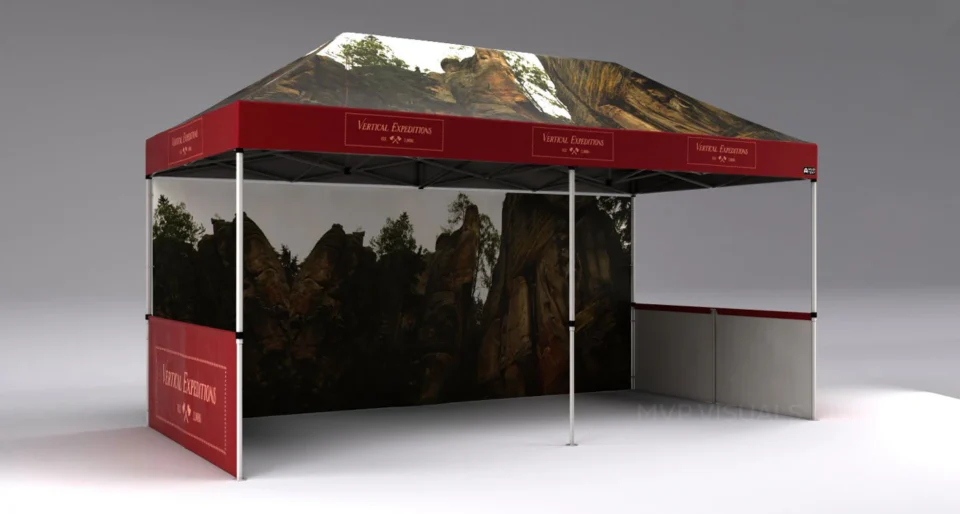Custom canopy tents stand out as useful in addition to adaptable investments when it comes to outdoor shelter options. Choosing the appropriate canopy tent may have a big influence on your experience, whether you’re using it for promotional events, trade exhibitions, farmers’ markets, or outdoor festivities. Making an informed choice necessitates carefully weighing a number of important aspects to make sure your investment fits your needs along with endures. In order to help you go through the alternatives and choose the perfect custom canopy tent, this article examines the five important factors you should consider before making your purchase.
Understanding the Structural Framework: The Backbone of Your Shelter
The structural structure is the cornerstone of every dependable canopy tent. The frames of contemporary canopy tents are usually composed of aluminum, steel, or a mix of the two. Steel frames are perfect for permanent or semi-permanent setups because of their remarkable stability in addition to ability to support a significant amount of weight. They could, however, need extra upkeep to avoid corrosion as well as rust. Despite being lighter and inherently rust-resistant, aluminum frames can not be as strong as steel. The thickness of the poles, the condition of the connections and connectors, and the presence of reinforced stress areas in the frame should all be carefully considered while examining the framework. Even under difficult weather circumstances, a well-designed frame should be simple to assemble and disassemble while retaining structural integrity.
Weather Resistance: More Than Just Water Protection
There are more components involved in weather resistance than just waterproofing. The canopy material needs to provide complete defense against a range of environmental factors. High-quality canopy materials frequently include UV-resistant coatings to shield passengers from damaging sun rays along with stopping fabric deterioration. A key factor in determining a fabric’s durability in addition to ability to withstand weather is its denier count, or thickness. To avoid condensation within the tent, use materials with sufficient ventilation capabilities. Equally crucial is the seam structure; heat-sealed or double-stitched seams with waterproof tape offer better resistance to leakage. If you want to use cooking facilities or heating equipment next to or beneath the canopy, take into account whether the material has been treated with fire-retardant chemicals.
Size and Portability: Finding the Perfect Balance
Measuring the area you need to cover is only one aspect of choosing the appropriate size. Take into account the weight and packed dimensions of the tent in relation to your storage space and ability to move it. Although a bigger tent can offer greater covering, it might be difficult to move and erect without extra assistance. Take into account the choices for height adjustment; many canopy tents have varied height settings to suit various applications or climates. Determine the amount of area needed for setup, taking into account any man lines or anchor points that may be needed for stability. Keep in mind that your space needs may change with the seasons; depending on the environment, you may need more space for heating or cooling equipment. The perfect canopy should combine keeping useful mobility with offering sufficient covering.
Customization Options: Making Your Mark
You may customize more than just your logo and color scheme. Take into account the sidewalls’ accessibility and attachment possibilities; certain systems provide more configuration options than others. Check to see if the canopy material can preserve its protective qualities while displaying the images you want. Examine the customizable printing processes; some could be more weather-resistant or long-lasting than others. Consider the potential for future modifications: will it be simple to update or alter the customisation components as your needs change? The greatest customisation choices should preserve the tent’s usefulness and longevity while enabling you to make a unique impression.
Long-term Value: Beyond the Initial Investment
It is necessary to go beyond the initial purchase price in order to assess long-term worth. Think over the conditions of the warranty and what it covers; some manufacturers provide full protection, while others only cover a portion of it. Examine the pricing and availability of replacement components; a tent that is a little more expensive but has easily accessible spare parts may end up being more cost-effective in the long run. Examine the upkeep needs and related expenses, taking into account cleaning materials and storage options. Take into account the tent’s adaptability; can it be used for various tasks or in various environments? A genuinely valued canopy tent should be able to withstand harsh environments, require little maintenance, and operate reliably for the duration of its life.
Conclusion
Keep in mind that selecting the ideal custom pop up tents requires giving serious thought to these interrelated aspects. Spend some time considering each factor in light of your unique demands and situation. A carefully considered choice will yield a tent that will be dependable for many years to come.

